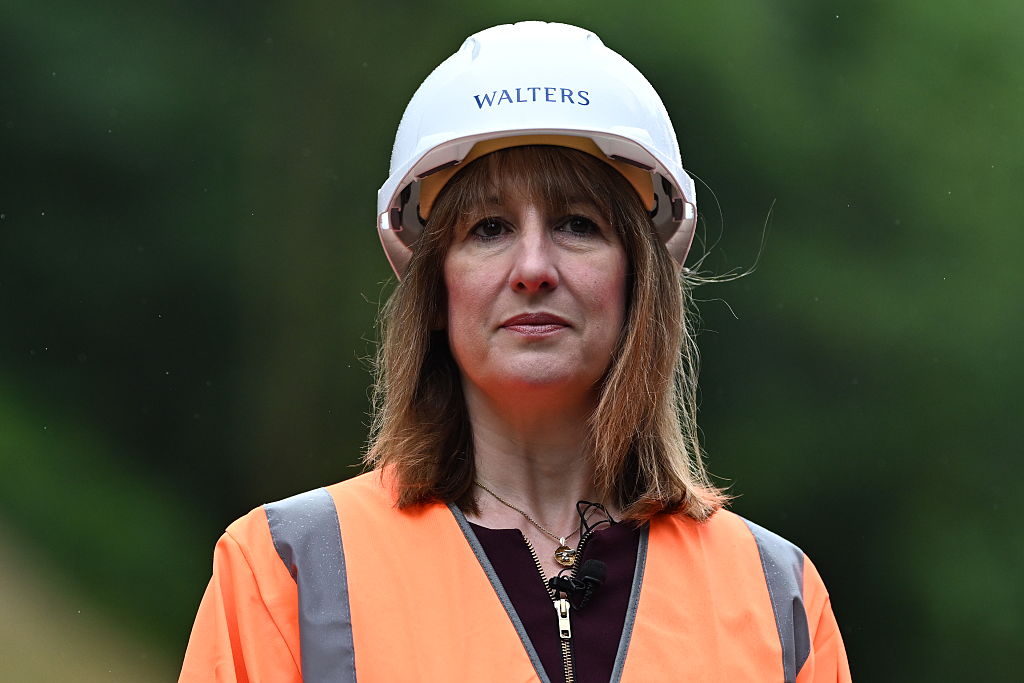Summary
- The Bank of England’s Monetary Policy Committee (MPC) has announced a 25 basis point cut to UK interest rates, as widely predicted
- Committee voted 5-4 in favour of the cut
- Four members voted to hold rates unchanged, while one (Alan Taylor) voted for a 50 basis point cut
- Inflation spiked to 3.6% in June, well ahead of the Bank of England’s 2% target
- Weakness in the UK economy prompted the MPC to stick to its rate-cutting schedule
- In June, the MPC voted 6-3 in favour of holding rates unchanged, as opposed to a 25 basis point cut
| When will interest rates fall further? | Inflation latest | MPC meeting dates |
Good afternoon, and welcome to our live coverage of the upcoming interest rates decision.
The Bank of England’s Monetary Policy Committee (MPC) announces its latest decision tomorrow (Thursday 7 August) at midday, and is generally expected to cut the headline rate by 25 basis points, to 4%.
That might seem unusual, given that inflation rose to 3.6% in June: well above the 2% inflation rate that the Bank of England targets.
We’ll go through the reasons why experts on the whole believe that the MPC will cut interest rates tomorrow in spite of persistent inflation, as well as explaining what an interest cut would mean for you and your money. Keep following our rolling coverage for all the details.

The MPC’s interest rate cut cadence
Markets tend to like certainty. One way in which the MPC can foster this is by being as predictable as possible in its actions. Central bankers tend to avoid surprising markets as much as possible.
So far this year, the MPC has stuck to one 25 basis point cut per quarter. It has signalled that it intends to keep doing so.
“On a very simplistic measure of Bank behaviour, it’s time for a cut,” says Laith Khalaf, head of investment analysis at AJ Bell. “The Bank of England has been metronomic in its activity during this rate-cutting cycle, with base rate getting chopped back every three months since last August.
“This fits in with the ‘gradual and careful’ narrative expounded by the Bank. One year on from that first rate cut, the steady drum beat of the rate-cutting cycle demands another thump.”
Markets are pricing in a rate cut of 25 basis points, explains Khalaf. Anything besides this – either holding rates where they are, or cutting them by 50 basis points – would come as a shock and could provoke a backlash in the bond market.
Inflation: the background to the MPC’s interest rates decision
Monetary policy is inextricably tied to inflation. The Bank of England (BoE) targets an inflation rate of 2%, which is widely regarded by economists as optimal for economic stability, and interest rate changes are the primary lever it can use to influence inflation.
The usual logic dictates that interest rates should be increased if inflation is running substantially above 2% or (importantly) if the BoE expects inflation to rise in the foreseeable future. In theory, this prompts people to spend less and save more, reducing demand for goods and services, and thereby slowing the pace of price increases.
Some might argue that, given inflation has risen to 3.6% in recent months, the MPC wouldn’t normally be thinking about cutting rates.
It might usually be expected to hold rates steady with inflation rising to its current level. In a strong, fast-growing economy, it might even be thinking about hiking rates, to prevent inflation accelerating.
But inflation is not the BoE’s only concern. It also has to consider the health of the economy – which is usually boosted by interest rate cuts.
For various reasons, which we will cover in detail here, experts think the BoE will err on the side of spurring economic growth rather than controlling inflation at tomorrow’s interest rates announcement.
“We’d expect the Bank to cut rates this month but offer very little in terms of forward guidance, besides reiterating its bias for further ‘gradual’ and ‘careful’ cuts,” says James Smith, developed markets economist, UK at ING.
Why the inflation outlook could be key to MPC’s base rate decision
When the MPC sets interest rates, it looks forwards as well as backwards. The Bank of England’s inflation forecasts are a key input in its decision-making.
While June inflation’s jump to 3.6% was above the Bank’s forecast of 3.4%, it wasn’t substantially more than expected, and crucially it is in line with the Bank’s broader forecast that inflation will peak at 3.7% during Q3 this year (probably in September).
From then, inflation (which is measured year-over-year, so compares prices in any given month to the same month the previous year) is expected to fall.
Several inflationary shocks took place during the first half of 2025, especially Trump’s tariffs and increased payroll taxes and minimum wage levels that came into effect in April.
These are now, effectively, working their way through the system, but the MPC expects their impact to dwindle through the end of 2025 and first half of 2026. According to its latest Monetary Policy Report, the Bank expects inflation to fall to 2.4% by Q2 2026, and to 1.9% a year later.
“Importantly, the Bank of England’s previous forecasts show inflation rising over the course of this year before falling back,” says Laith Khalaf, head of investment analysis at AJ Bell. “So prices are currently evolving broadly in line with what the Bank has been expecting.”
For that reason, high levels of inflation are not – at present – enough of a concern for the MPC to deviate from its rate-cut cadence.
UK's weakening economy makes an interest rate cut more likely
While inflationary pressures are expected to subside, the UK economy is stagnating. Relatively high interest rates are exacerbating this.
The UK economy shrunk for the second consecutive month in May, while unemployment climbed to a four-year high.
“The economy is likely to face persistent headwinds,” says Michael Saunders, former MPC rate-setter and senior economic advisor at Oxford Economics. “Trade policy uncertainty remains high, deterring investment and hiring.”
With this in mind, Saunders expects that the MPC is likely to cut rates later this year, and again early next year. He anticipates that rates could even fall as low as 3.25% by mid-2026.
How did the MPC vote at its last meeting?
The Monetary Policy Committee (MPC) is a working group of nine members, each of whom votes on interest rates at each meeting.
At the last meeting, three of the nine – Swati Dhingra, Dave Ramsden and Alan Taylor – voted to cut interest rates to 4.00%. The remaining six voted to keep them unchanged at 4.25%.
MPC member | June 2025 meeting interest rate vote |
|---|---|
Andrew Bailey | 4.25% |
Sarah Breeden | 4.25% |
Swati Dhingra | 4.00% |
Megan Greene | 4.25% |
Clare Lombardelli | 4.25% |
Catherine L Mann | 4.25% |
Huw Pill | 4.25% |
Dave Ramsden | 4.00% |
Alan Taylor | 4.00% |
Source: Bank of England
James Smith, developed markets economist, UK at ING, thinks that we could see a rare three-way split at tomorrow’s announcement.
“At least one official – Catherine Mann – is likely to vote for no change,” says Smith, adding that she could be joined by Huw Pill and Megan Greene.
“At the opposite end of the spectrum, arch-dove Swati Dhingra is likely to vote for a larger 50 basis point cut,” says Smith. “Fellow dove Alan Taylor might be tempted to join her, though he recently said he’d like to see three more cuts this year, which tends to suggest he’ll vote for 25bp moves at each meeting.”
Smith's guess is that seven members will vote for a 25 basis point cut, with one "dissenter" voting in each alternative direction (for no change on the one hand, and a 50 basis point cut on the other).
When will the MPC announce its interest rate decision?
As a reminder, the Monetary Policy Committee’s (MPC) base rate decision will be announced tomorrow (Thursday 7 August) at 12pm.
Read our explainer for more information on future MPC meeting dates.
That concludes today's coverage, but we'll be back tomorrow morning with more on what an interest rate cut could mean for your money. We'll also bring live updates and reaction following the MPC's announcement.
Interest rate announcement due today
Good morning, and welcome back to our rolling coverage of UK interest rates, as the Monetary Policy Committee (MPC) announces its latest base rate decision today at 12pm.
As a reminder, the expectation among economists and markets is that the MPC will cut UK interest rates by 25 basis points, to 4.00%.
We’ll look in detail this morning at what lower interest rates could mean for your money. Then, this afternoon, we’ll bring live reaction to the MPC’s decision.
Recap: economic weakness expected to prompt an interest rate cut
Central banks need to balance two separate mandates: controlling inflation, and supporting economic growth. The two are often correlated: greater growth in the economy means there is more money, which pushes costs up. In these instances, central banks increase interest rates to reduce the flow of money and the incentive to spend.
It isn’t always that simple. Sometimes inflation goes hand-in-hand with weak or negative economic growth. This perilous scenario is called stagflation, and the UK economy risks slipping towards it.
“The MPC are once again facing crosswinds in their forthcoming meeting to determine bank lending rates,” says Steve Matthews, investment director, liquidity at Canada Life Asset Management.
While remaining aware of the uplift in inflation, the MPC will likely lean towards cutting interest rates to protect the UK economy.
“With inflation still expected to return to the 2% target by 2026, we believe the MPC will continue to prioritise economic support,” said Matthews. “Markets have already fully priced in this move, and we see potential for at least one further cut by year-end.”
UK’s small businesses would welcome an interest rate cut
As we saw yesterday, weakness in the UK economy will likely steer the MPC towards a 25 basis point cut today, despite inflation running high at 3.6% in June.
One group that is feeling the pinch of economic weakness is the UK’s 5.5 million small- and medium-sized businesses (SMEs). These have been struggling against higher employment taxes, increased expenses and elevated costs of borrowing in recent years.
“As a result, business confidence has taken a hit, the jobs market has weakened, and growth is in a state of stagnation,” comments Jamie Stewart, CEO of business banking platform binq.
Stewart says that an interest rate cut would be welcome news to the UK’s SMEs, as it would reduce their costs and increase consumer spending power.
“SMEs are the backbone of the economy, employing 16.6 million people, and generating £2.8 trillion in annual turnover,” says Stewart. “If the government is serious about a plan for growth, then it starts with working with the Bank of England and businesses to make it happen.”

UK small businesses, like these in Windsor, would welcome an interest rate cut
Annuity rates could fall along with another base rate cut

With a base rate cut on the horizon, pension incomes could fall too. That’s because changes to the Bank of England base rate can affect how much guaranteed income you get from your pension, if you buy an annuity.
Annuities are a way of turning your pension pot into a lifetime income. You buy an annuity by swapping it for your pension savings. How much income you get in return depends on annuity rates. These are linked to UK government bond yields, which are in turn linked to the Bank of England base rate.
When interest rates are low, bond yields are typically lower which means annuity rates have also tended to be lower. So a cut in interest rates could mean a fall in annuity rates. However recent cuts to the base rate haven’t rocked the annuity boat too much so far.
Helen Morrissey, head of retirement analysis at Hargreaves Lansdown, said: “Annuity rates have remained robust and currently hover close to all time highs.
“Recent interest rate cuts haven’t had a huge impact on annuity rates so far as they are only one contributing factor alongside long-term gilt yields. Should we see a cut tomorrow we might see a small decrease in annuity rates over the coming weeks.
“Would-be annuitants will be watching expectations for further rate cuts closely and the prospect of more coming down the line may encourage them to secure a guaranteed income sooner rather than later.”
Mortgage rates have fallen with interest rate cuts
Interest rate cuts are typically good news for borrowers, bad news for savers.
There have, so far, been 0.75% in cuts to UK interest rates since last August, with the expectation that will rise to 1.00% today. Data from Moneyfactscompare.co.uk shows that mortgage holders have benefitted from these cuts, with the average standard variable rate (SVR) having fallen 0.74% since the start of August 2024.
"The continuation of falling mortgage rates will instil a sense of confidence among borrowers," said Rachel Springall, Finance Expert at Moneyfactscompare.co.uk.
"There remains a clear financial gain for borrowers to shift from a variable rate mortgage onto a cheaper fixed rate, as a typical mortgage borrower being charged the current average SVR of 7.42% would be paying £372 more per month, compared to a typical two-year fixed rate," she adds.
What do you think will happen to UK interest rates?
We’re around an hour away from the MPC’s interest rate announcement. We want to hear from you – what do you think the decision will be?
What could a rate cut mean for your savings?

With most analysts expecting the MPC to vote to cut interest rates today, some savers will be concerned that the relatively high savings rates that they’ve enjoyed over the past few years could be coming to an end.
While an interest rate cut could mean more money staying in your pocket as you pay less for your mortgage, it can also be a blow for your cash savings.
The average rate of interest across all types of savings accounts is currently 3.5%, according to Moneyfacts, rising to 5.1% for the best savings account on the market.
If a base rate cut is imposed today, we can expect that these savings rates will fall in line with the MPC’s decision.
This could present a good opportunity for savers to take a look at their savings accounts and make sure their money is working hard for them.
Derek Sprawling, head of money at Spring by Paragon Bank, says a base rate cut is “a timely reminder for savers to scrutinise the value they’re getting from their savings accounts, particularly those offered by high street banks.”
He notes that many savings accounts on the market have “strings attached” like withdrawal limits or tiered rates.
Sprawling adds that “worse yet, the average rate offered on these ‘true’ easy access accounts by the big high street lenders will be less than 1.5%.”
“A Base Rate cut often triggers a ripple effect across savings segments. I urge savers to take stock of their current accounts and ensure they’re not being short-changed – especially when better, unrestricted options are available.”
GBP could be in a “lose-lose situation”, whatever happens to UK interest rates
Interest rate decisions can sometimes impact foreign exchange rates. While a 25 basis point cut is priced in by the market, that decision would be unlikely to move GBP in its own right if it is confirmed, says George Vessey, lead FX & macro strategist at cross border payments platform Convera.
“Sterling’s reaction may be muted,” he says, but he warns that the balance of risk may be tilted to the downside whatever happens.
“If the Bank sticks to quarterly 25bp cuts, current market expectations – just 60bp of easing by February – look too shallow. That leaves room for more cuts to be priced in, weighing on the pound,” he says.
“Conversely, if the BoE turns hawkish in response to sticky inflation within a stagflationary backdrop, sterling could still come under pressure. Higher nominal rates may not lift real yields if inflation expectations stay elevated and growth weakens, reducing the appeal of UK assets.
“The bottom line is, the pound may be looking at a lose-lose situation here, especially against the euro,” says Vessey. He highlights, too, that GBP/USD usually falls during August.

Could the pound fall against the euro following today's interest rates decision?
Keep an eye on the forecast
The headline interest rate decision seems fairly likely to be a 25 basis point cut. That’s far from guaranteed, but anything else would come as something of a shock to the market.
What is harder to predict is what signals the MPC will give as far as future interest rate decisions are concerned.
George Vessey, lead FX & macro strategist at cross border payments platform Convera, isn’t expecting substantial change in the Monetary Policy Report following the latest issue, from May. “Overall, we expect the August forecasts to closely mirror May’s Monetary Policy Report, with only modest adjustments: inflation steady, GDP slightly higher on reduced tariff drag, and softer labour market projections,” he says.
But that could be accompanied by a shift in perspective and outlook from the MPC, which has so far carefully signposted its intention for ‘gradual’ cuts, equating in practice to one per quarter over the last year.
“With inflation surprising to the upside and expectations drifting higher, the MPC is unlikely to pre-commit to further easing after today’s cut,” says James Carter, portfolio manager at W1M. “Assuming further labour market softening, we would still expect cuts in November and February. However, today’s move likely marks the start of a more data-dependent phase, with policymakers watching global events closely and balancing the risk of persistent inflation against a cooling jobs market.”
Global instability, particularly the unfolding tariff situation, could have a strong bearing on the MPC’s next interest rate decision, Carter adds.
Just ten minutes to go until the MPC reveals its latest decision on UK interest rates.
BREAKING: Bank of England cuts UK interest rates by 0.25%
As widely expected, the MPC has reduced UK interest rates by 25 basis points to 4.00%. More reaction and analysis to follow shortly.
Bank of England delivers “overwhelmingly expected” interest rates cut
“As overwhelmingly expected by the forecasting community, the BoE reduced interest rates by 25bps to 4.00%,” says Patrick O’Donnell, chief investment strategist at Omnis Investments.
“Unsurprisingly, there wasn’t enough convincing macro data to warrant a change in the ‘gradual and careful’ guidance from the bank.
“We still expect a further cut from the BoE in November and a likely quicker pace of cuts into 2026 due to global factors,” adds O’Donnell.
The MPC's interest rate vote in detail
Arguably, a closer vote than many had expected.
Four MPC members (Andrew Bailey, Sarah Breeden, Swati Dhingra and Dave Ramsden) voted in favour of the proposal to reduce interest rates by 0.25 percentage points. Dhingra had been widely expected to vote for a 0.5 percentage point cut. In the event, only one member, Alan Taylor, voted for this.
Four members (Megan Greene, Clare Lombardelli, Catherine L Mann and Huw Pill) voted to hold rates unchanged.
That gave the interest rate cut a 5-4 majority.
Reeves: interest rate cut is welcome news
UK chancellor of the exchequer Rachel Reeves has responded to the Bank of England’s decision to cut interest rates.
“This fifth interest rate cut since the election is welcome news, helping bring down the cost of mortgages and loans for families and businesses,” she said.
“The stability we have brought to the public finances through our Plan for Change has helped make this possible and helped us become the fastest growing economy in the G7 in the first quarter of this year.
“We’re locking in this growth in the long run by investing over £113 billion in infrastructure, securing three major trade deals and embracing the technologies of the future – to drive up wages and improve living standards across the UK.”

UK chancellor Rachel Reeves during a visit to the coal tip in Port Talbot, Wales, today ahead of the MPC's interest rate announcement
Bank of England knows uncertainty isn’t going away soon
The third small interest rate cut of the year continues the MPC’s cautious approach to cutting UK interest rates. It is threading a difficult path between stagnant growth and persistent inflation. The precariousness of this balance is reflected in the 5-4 voting split among the panel.
“Despite inflation levels remaining high, this decision is in line with the Bank of England’s steady and gradual approach to loosening interest rates,” said Brad Holland, director of investment strategy at J.P. Morgan-owned Nutmeg.
“While the committee was divided, they will be well aware that recent uncertainty isn’t going away any time soon. The economic picture in the UK remains fragile, with headline inflation well above the Bank’s target and services inflation locked in a stalemate at 4.7%.”
Tariff fears are weighing on the MPC
It is clear that some members of the MPC are nervous about the prospect of inflation rising beyond current levels and projections, with four of the nine committee members voting against an interest rate cut.
The uncertain global trade situation as a result of Trump’s tariffs is exacerbating this fear.
“This wasn’t quite the dovish shout we had been expecting – the 5-4 vote on the MPC means that there is still no desire to go in hard on rate cuts,” says Chris Beauchamp, chief market analyst at IG.
“Instead the ‘gradual’ messaging remains in place, though the committee noted that the downward path of rates was still in place.”
Bank of England predicts 4% inflation in September
Here’s a key line in the summary of the MPC’s latest meeting:
“CPI inflation is forecast to increase slightly further to peak at 4.0% in September”.
That is double the Bank's target rate, and reflects and acknowledgement from the Committee that inflation has been coming in hotter than expected in recent months.
Weighed against the economic weakness that the UK is currently facing, the Committee has – just – erred towards stimulating growth over guarding against inflation. However, the summary notes:
“The timing and pace of future reductions in the restrictiveness of policy will depend on the extent to which underlying disinflationary pressures continue to ease.” In other words, it is going to be keeping a very close eye on where inflation is going before its next interest rates decision.
Pound rises on hawkish MPC vote split
The pound surged against the dollar following the announcement of the MPC’s interest rate decision. The 25 basis point cut had already been priced in, but the narrowness of the decision came as a surprise.
“It’s the four votes to hold rates steady that caught markets off-guard,” said George Vessey, lead FX & macro strategist at cross border payment platform Convera.
“The pound jumped higher on the news, in line with surging gilt yields, as traders recalibrated expectations for further easing,” he added. “The odds of another cut in Q4 have now dropped to less than 65%, down from over 90% before the decision.”
Interest rate cut is a “pre-emptive strike” against a downturn
The MPC may be looking at what is yet to come just as much as what has already been when it comes to the economic rationale for today’s interest rate cut.
“The Bank’s Monetary Policy Committee has launched a pre-emptive strike on any economic downturn later in the year,” said Nicholas Hyett, investment manager at Wealth Club. “It remains unsaid in these minutes, but the increasing likelihood of tax hikes and/or spending cuts at the Autumn Budget has also probably played a part in this ‘finely balanced’ decision.
“Both consumers and companies could see their pockets squeezed by the taxman, and that would have knock-on effects for economic growth.”
Markets are still pricing in one more cut this year, but Hyett thinks today’s decision marks the start of a “wait and see phase”. The Bank will hope that today’s cut gives the economy the boost that it needs, without adversely affecting the inflation picture.
With interest rates falling, savers should look ahead
We’ll bring more reaction to the MPC’s vote and report later today, but let’s have a closer look at what today’s interest rate cut means for your money – starting with savings.
Savers will have already noticed a fall in their returns in the run-up to today’s announcement, with the 25 basis point cut – if not the precise vote split – having been priced in for some time.
“Easy access rates on the Hargreaves Lansdown Savings platform have fallen 20 basis points on average over the past month, and fixed terms are down 10 basis points,” says Mark Hicks, head of active savings at Hargreaves Lansdown.
Sally Conway, savings expert at Shawbrook, says that now is a good time for smart savers to look at fixing their savings rate.
"Many analysts are predicting at least one more cut this year, and possibly a slow and steady decline into 2026,” she says.
“Fixing a rate now could give you peace of mind and help protect your return if savings rates do start to fall. When the outlook’s uncertain, a bit of forward planning can go a long way."
“While the most competitive fixed terms are still very fractionally behind easy access deals, they have edged much closer, and today’s cut could see more movement,” says Hicks. “The fact that Bank of England rate cuts look set to be sluggish should mean fixed rate deals could remain robust, so if you have savings that you don’t need for a few months or longer, it makes sense to consider tying it up in a fixed rate account, so you can guarantee to hold on to today’s strong rates.”
Interest rates cut could boost UK housing market activity
While falling rates are bad news for savers, they are good news for borrowers – and that, in turn, is good news for the housing market.
“Following a period of stagnant house price growth in the wake of the end of the stamp duty holiday in April, we are expecting market activity to ramp up considerably now as more individuals and businesses take advantage of lower rates,” says Ryan Etchells, chief commercial officer at specialist property lender Together.

Lower interest rates mean lower mortgage costs, which could help boost UK housing market activity
“The 0.25% cut to the base rate will offer blessed relief to mortgage borrowers as lenders are expected to drop their mortgage prices over the next few weeks,” Etchells adds.
Recap: UK interest rates cut by 25 basis points
To recap on the headlines from this afternoon: the Bank of England’s Monetary Policy Committee (MPC) today cut UK interest rates by 0.25 percentage points to 4.00%.
That decision was widely expected in advance of today’s announcement, but the vote split caught markets’ attention. Four members of the MPC – Megan Greene, Clare Lombardelli, Catherine L Mann and Huw Pill – voted to keep rates unchanged, with high inflation weighing against signs of a weakening economy. That gave the proposal to cut a narrow 5-4 win.
Previous assumptions that the current pace of rate cuts (one per quarter over the past year) will continue, or even accelerate next year, are coming into question.
“Markets have pushed back expectations for further rate cuts this year,” says Sanjay Raja, chief UK economist at Deutsche Bank. “The MPC is leaning more on upside inflation risks – as opposed to downside labour market risks when thinking about its calibration of monetary policy.”
Falling interest rates meet stubborn inflation: what now for cash savers?
The picture is bleak for cash savers, with interest rates falling even as inflation remains stubbornly high.
“This probably signals the end of the road for many savings accounts that currently beat inflation,” says Emma Sterland, chief financial planning officer at Evelyn Partners. “We can expect to see savings rates reduced in the coming days and weeks, leaving returns on even the best accounts only marginally positive in real terms - especially after tax.”
It may well be time for cash savers to start thinking creatively about protecting their wealth, regardless. Chancellor Rachel Reeves had been expected to reduce the cash ISA limit in a bid to encourage people to start investing, and while those plans appear to have been shelved for now, they could come back around in future.
There are various ways for savers to generate cash-like returns within their stocks and shares ISA, for example by using money market funds.
“Money market funds invest in highly liquid and low risk short-term debt instruments that pay interest such as T-bills, Floating Rate Notes, Certificates of Deposit and government and commercial bonds that are close to maturity,” says Sterland. She cautions, though, that they are one-size-fits-all solutions. “Returns will be eroded by both fund and platform costs, as well as potentially taxation, depending on where it is held.”
Sterland also suggests direct gilt purchases for more experienced investors, or discretionary portfolios such as Evelyn’s Cash and Cautious Bond strategy.
Rising inflation could boost the state pension
The MPC is now forecasting UK inflation to peak at 4% in September. That is a key month for anyone currently drawing a state pension, as it is the month at which the CPI read for the purposes of state pensions is taken.
The state pension triple lock means that state pension payments rise annually by whatever is highest out of:
- Inflation
- Average earnings growth
- 2.5%
“If the Bank of England is right about inflation, then pensioners can look forward to a rise of at least 4% in their state pension next year,” says Laith Khalaf, head of investment analysis at AJ Bell.
“It’s possible that wage growth may trump inflation, and pensioners get an even bigger bump in their income,” he adds.

State pension recipients could receive a boost from the forecast September inflation peak
That concludes our live reporting of today's interest rates decision - thank you for joining us today.
There are three more MPC meetings scheduled before the end of the year:
- 18 September
- 6 November
- 18 December
MoneyWeek will provide live reporting on all of these, so we look forward to seeing you again in September.
